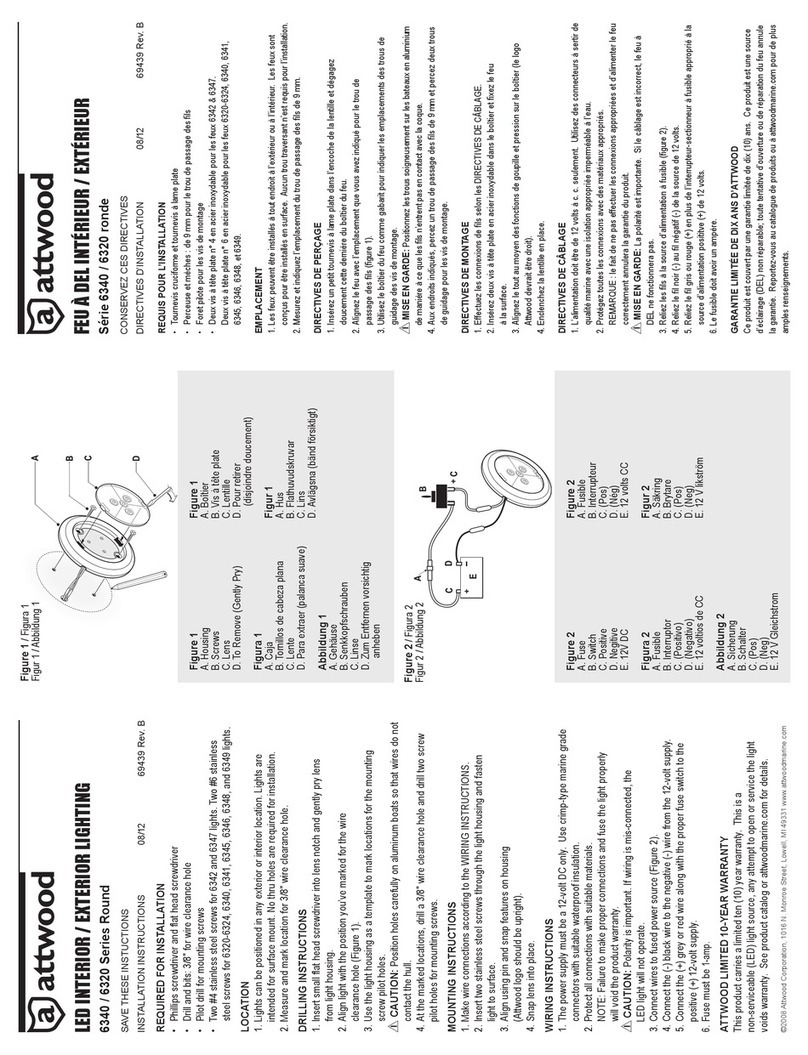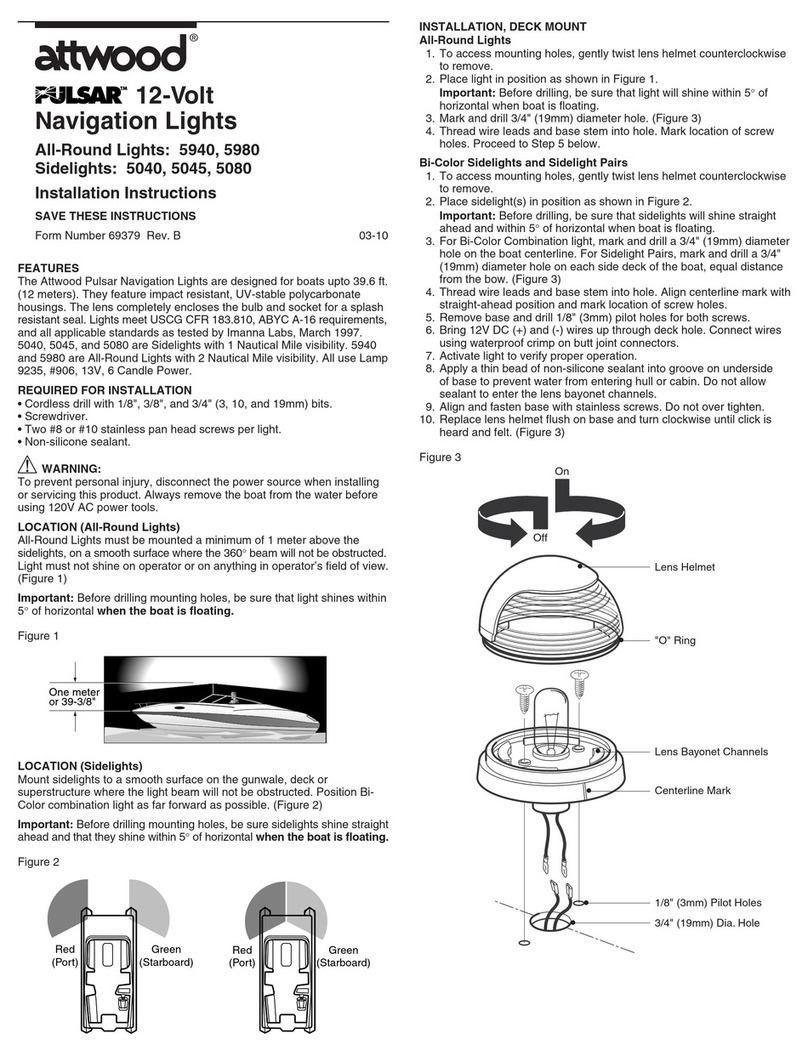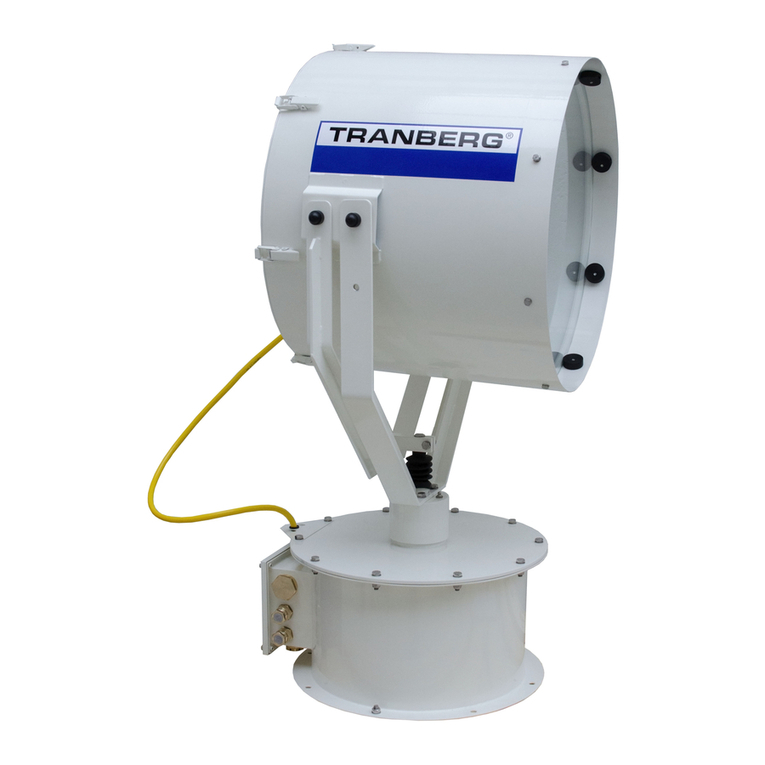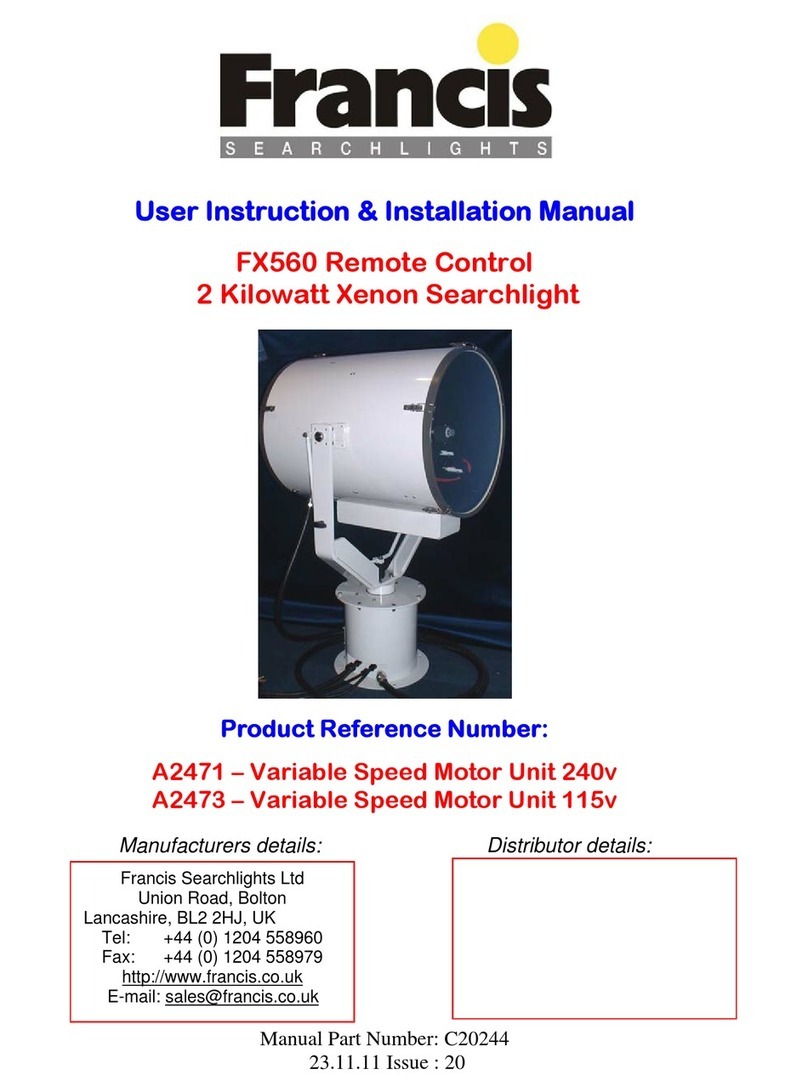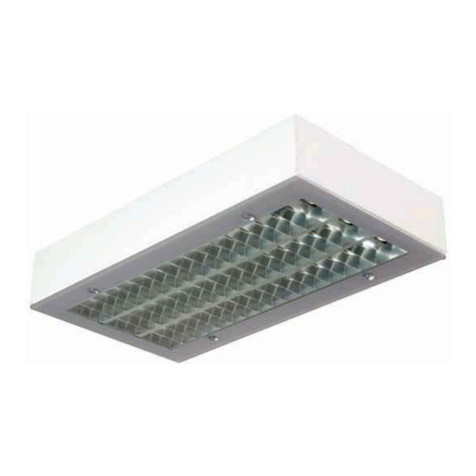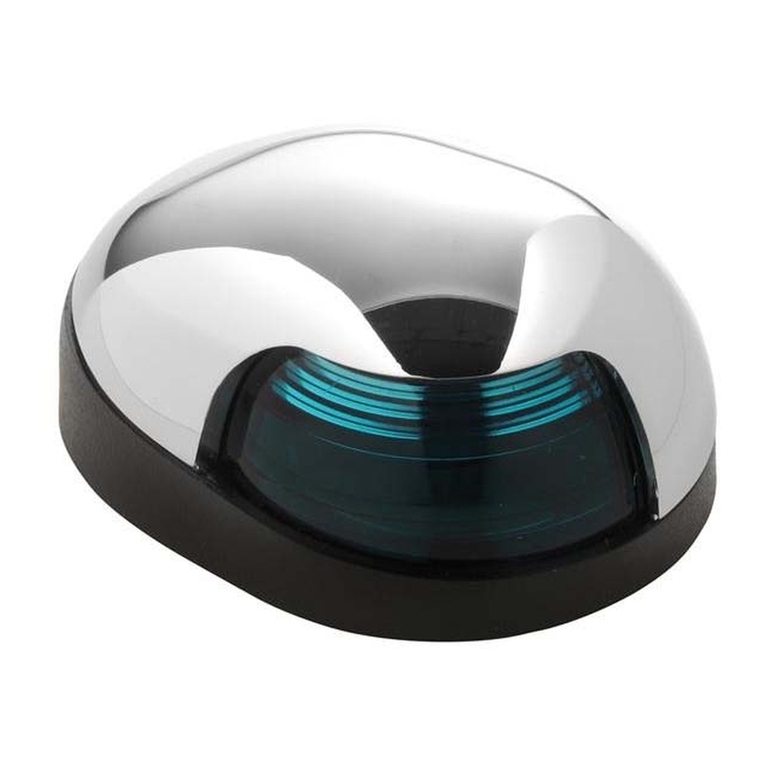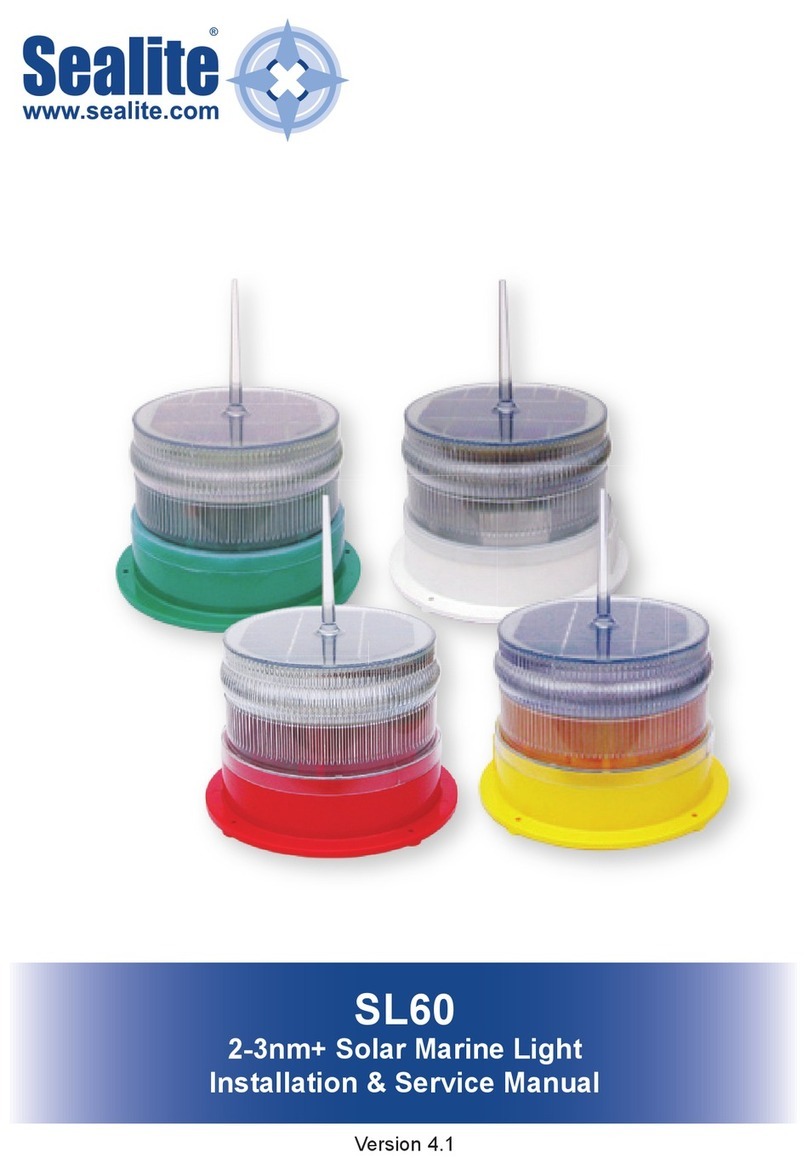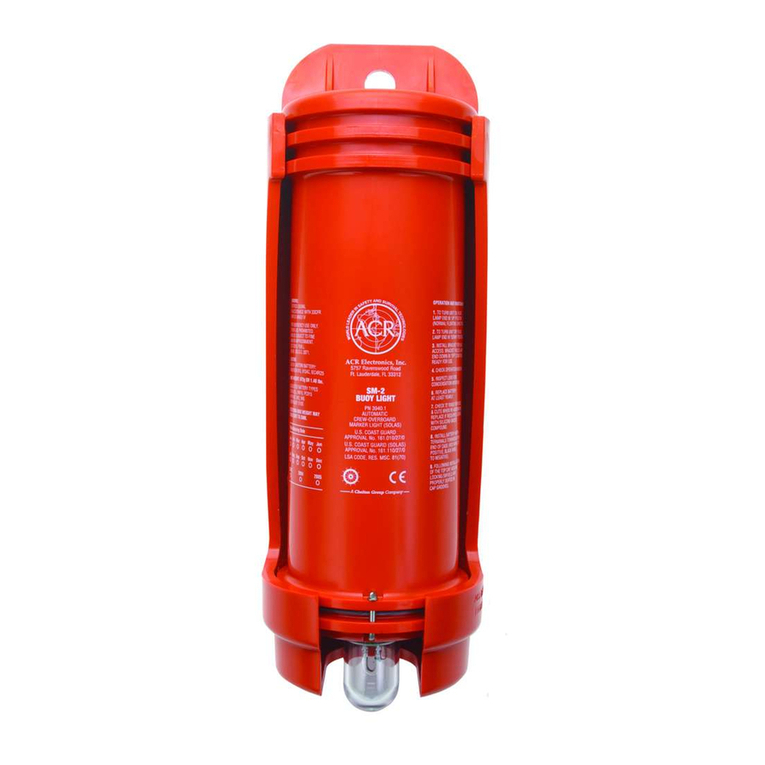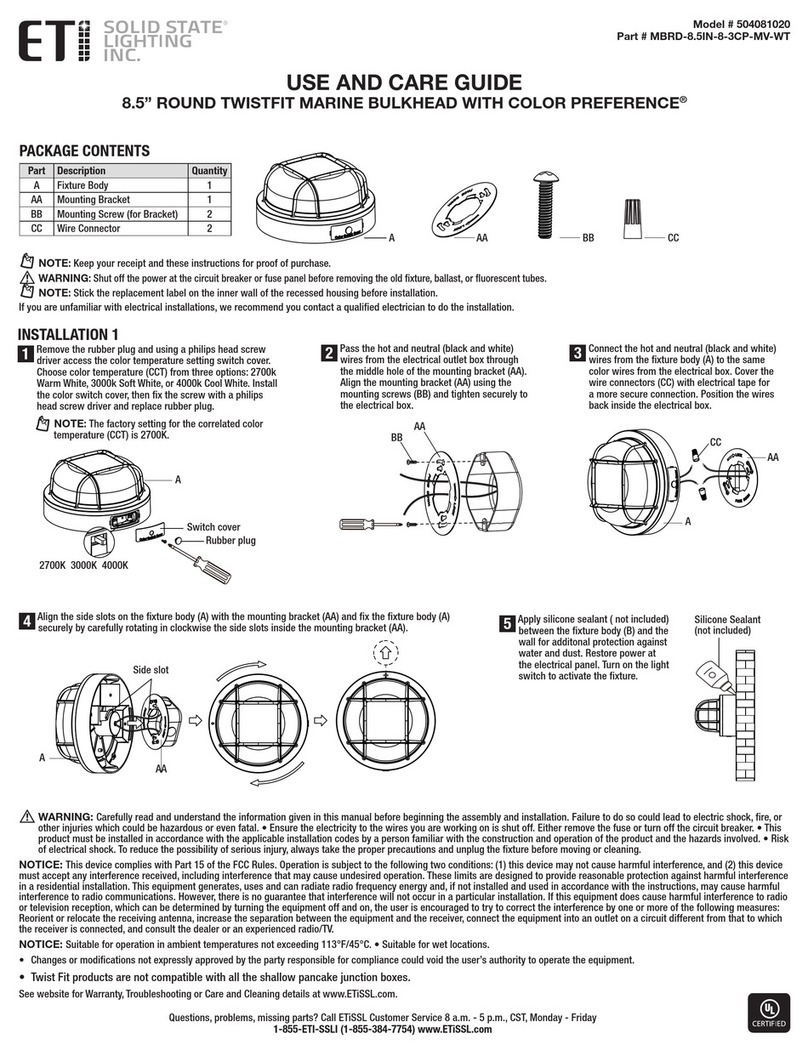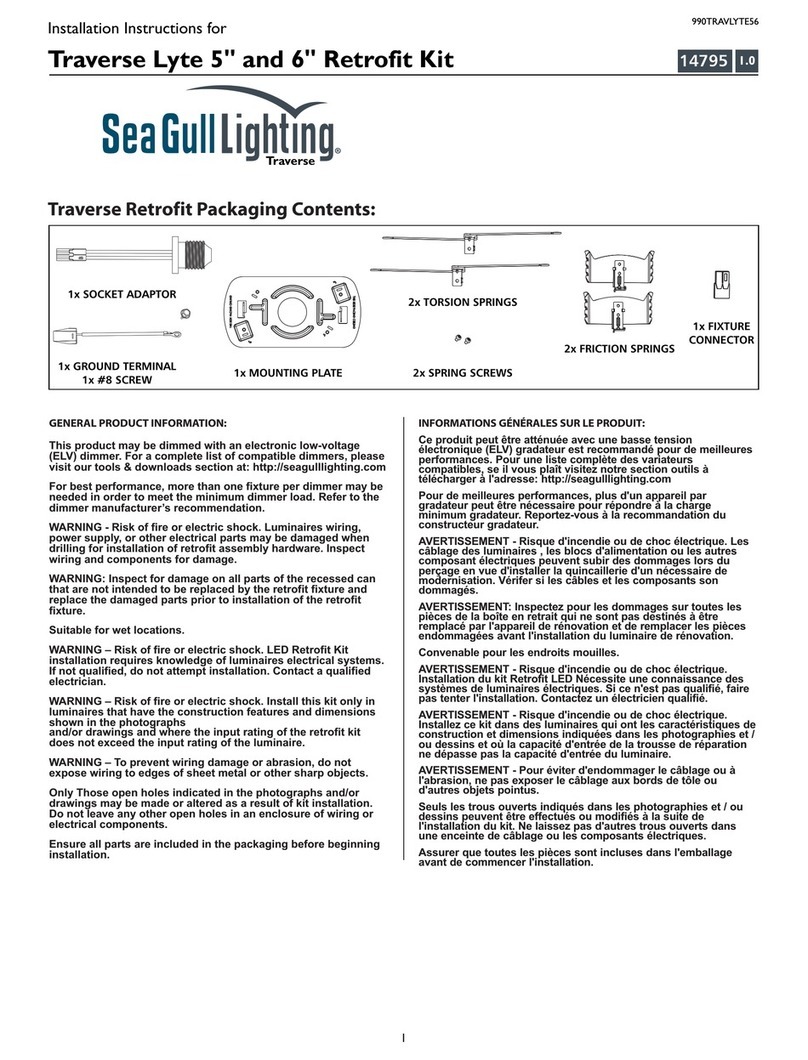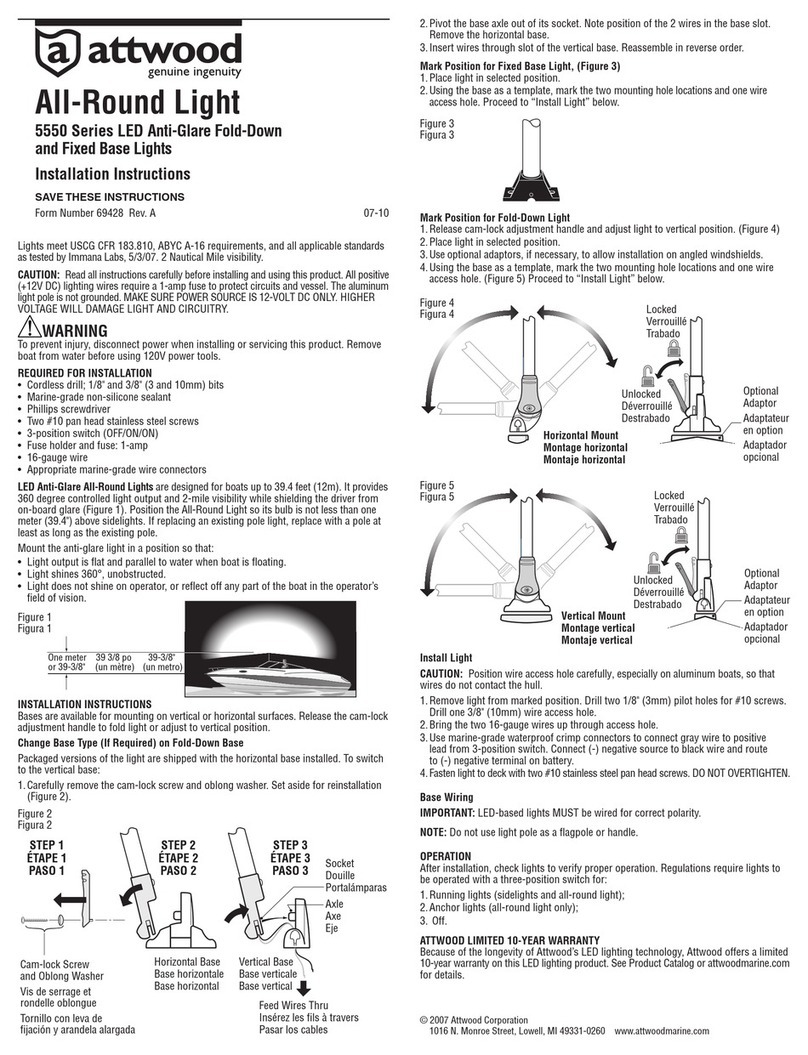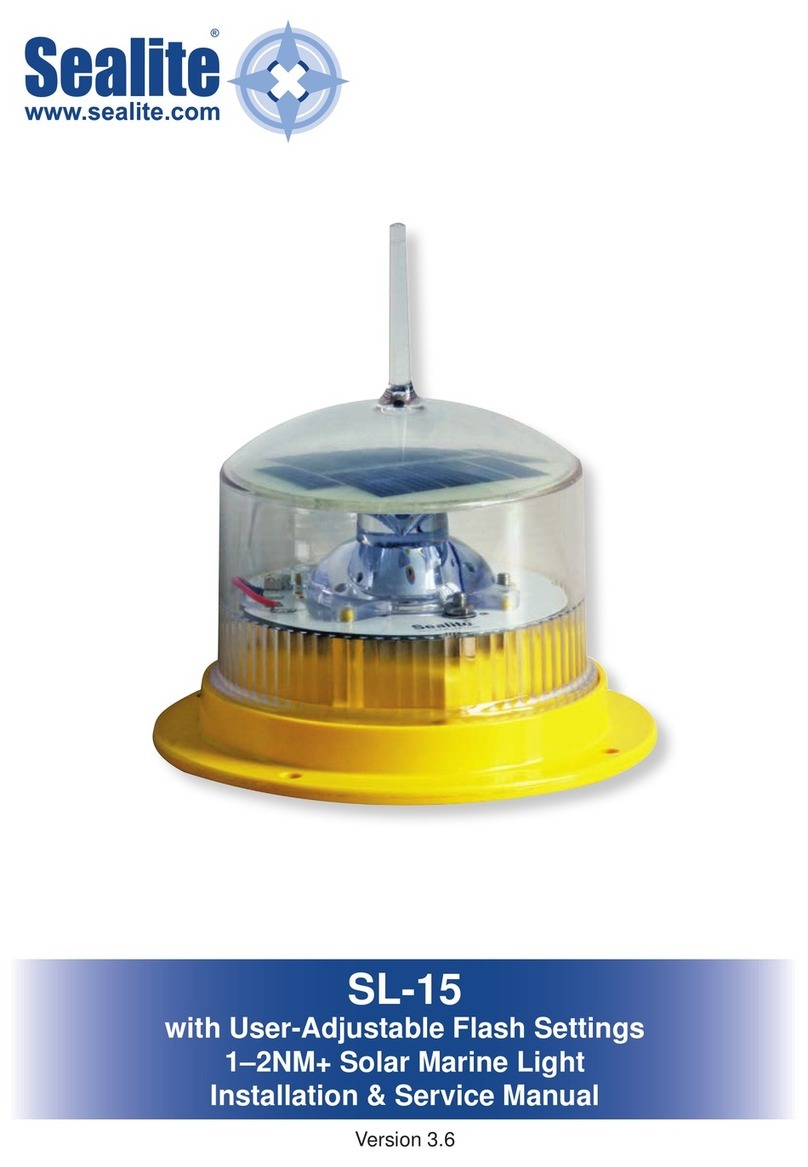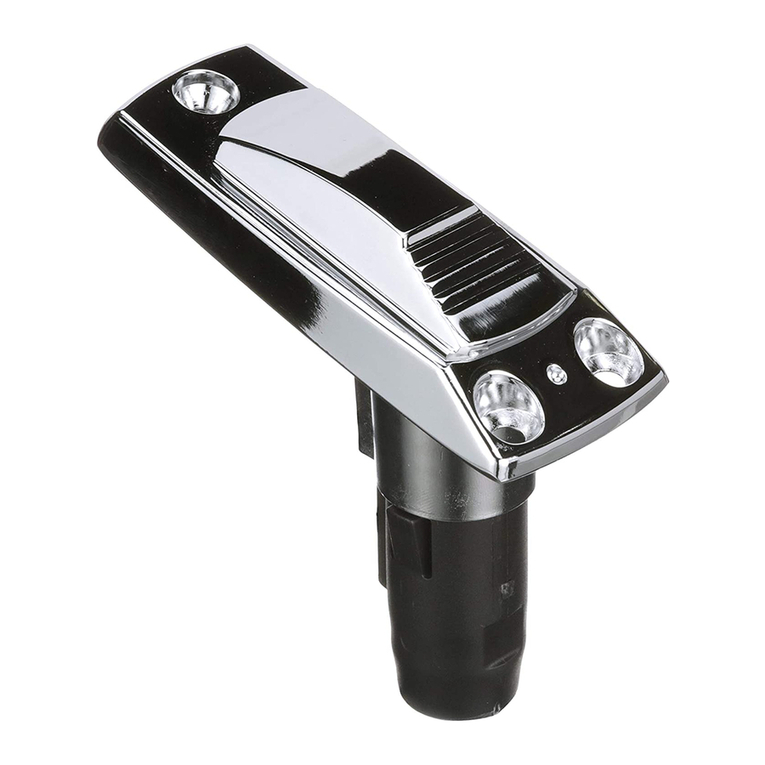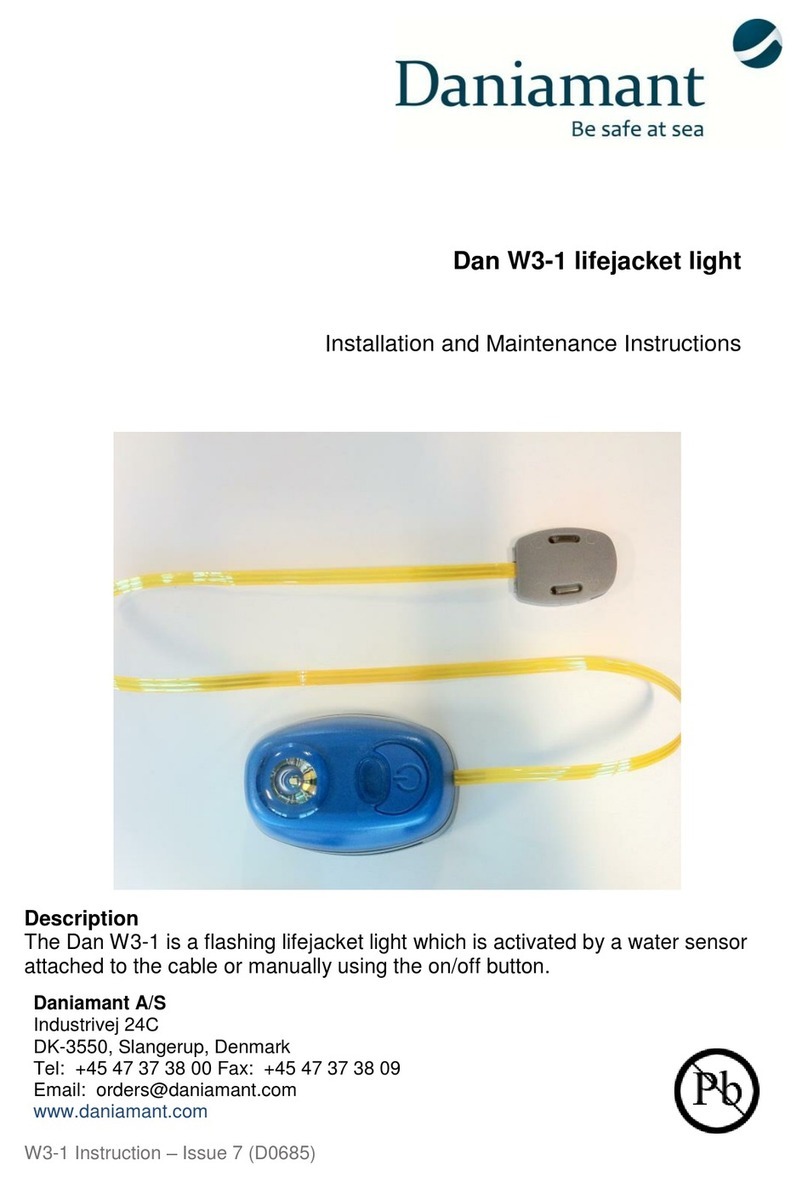8xx USER MANUAL
TABLE OF CONTENTS
3 ©2019 Sabik Marine, LLC
Table of Contents
Warnings & Precautions.......................................2
Regulatory Information.........................................2
Safety and Usage Precautions.............................2
Warranty Disclaimer.............................................2
Table of Contents.................................................3
Introduction....................................................4
Applications..........................................................4
Range...................................................................4
Common Features and Functionality...................4
Parts Description...........................................5
Programming the Lantern.............................6
Preparing the Lantern for Installation...................6
Viewing Lantern Settings......................................6
Summary of Lantern States and Statuses ...........7
Using the Infrared (IR) Programmer...................11
Turning the Lantern On or Off............................12
Setting the Flash Character................................13
Setting Effective Intensity...................................13
Setting an Intensity to Comply with Obstruction
Lighting Standards.........................................13
Setting Intensity of Infrared (IR) output..........14
For all other applications:...............................14
Activating/De-activating Automatic Light Control
(ALC)..................................................................14
Setting the Calendar Function............................15
To toggle the Calendar setting on or off: .......15
To set the date that the lantern will enter dated
shutdown:.......................................................15
To set the date the lantern will reactivate: .....15
Editing the Lantern Date and Time (Non-GPS
Units Only)..........................................................16
To edit the lantern date:.................................16
To edit the lantern time:.................................16
Setting Day-to-Night Transition Level ................17
Setting Night-to-Day Transition Level ................17
Enable/Disable Tap-to-Activate LED Display
Option.................................................................18
Viewing Firmware Version..................................18
Enabling Telemetry ............................................18
Setting the Synchronization Function (GPS or
Wired-Sync equipped Lanterns Only) ................19
GPS Status (GPS-equipped Lanterns Only)......19
Installing a Lantern ..................................... 20
Choosing a Suitable Location............................ 20
Adequate Sunlight......................................... 20
External Power Source (M840)..................... 20
Ambient Temperature ................................... 20
Securing the Lantern......................................... 20
Wired-Sync Enabled Lanterns........................... 21
Installing the Bird Deterrent............................... 21
Charging the Lantern (Self-Contained
Only) 22
Sunlight ......................................................... 22
External Power Source ................................. 22
Charge Indicator............................................ 22
Charging via an External Power Source (Quick
Access Charge Port) ......................................... 22
Determining Battery State of Charge (Self-
Contained Only)................................................. 23
Changing the Battery (Self-Contained Only)..... 24
Changing the Battery (12V) (Self-Contained Only)
........................................................................... 26
Preparing the Lantern for Storage (Self-
Contained Only) .......................................... 28
Storage Maintenance/Duration.......................... 28
Warranty and Customer Service................ 29
Warranty............................................................ 29
Additional Products............................................ 29
Customer Service.............................................. 29
Appendix A: Flash Characters..................... 30
Appendix B: Troubleshooting....................... 39
